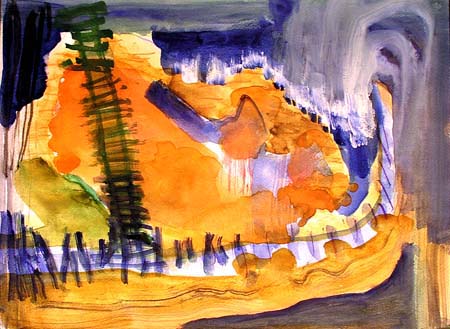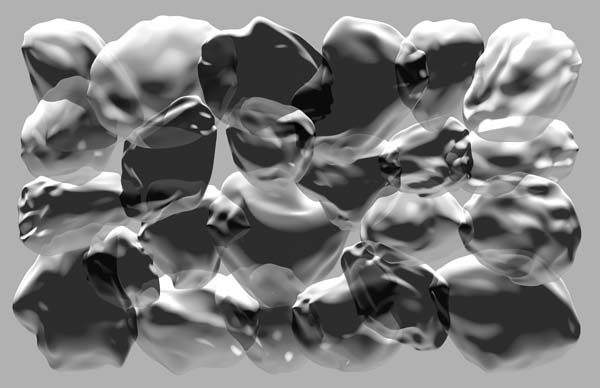Untill 1998
The development of my work has been mainly through visual language. Visuals have been and still are the path that defines the content and with that the drama in the broadest sense of the word. A change in technique and materials made this new process possible, by making use, for example, of particular volumes and transparency. This way the expressive content is taken to a next phase. First of all there was the challenge for me to apply the paint in landscapes, figures and still lifes in such a fashion that it is tangible and layer over layer. From these coats of paints, visibly painted over one another with spatulas en brushes, developed random expressive volumes. The paint covered the whole painting at first, but later on developed to be transparent. Colour and figuration became inferior as well as the narrative strength. Abstraction became the main focus.

Strokes and random volumes 1998
The strokes were also presented as loose volumes by first painting them on a bearer, from which they could be removed. By doing this the independence of the volume or shape is emphasized. This concept became determining in future developments. It was the foretoken for my animations. I applied these loose volumes on blind- and graphite-stamping as well as in my ‘plastica’s’.

Plastica’s 2002 –
The name ‘plastica’ is referring to transforming and plastic. The sheets I use are plastic, on which a light color is applied at first and later only transparent paint. Eventually I apply more relief on the sheets with a vacuum table, warmth and moulds. These a-chromatic sheets give a spatial metaphysic experience due to light, shadow and reflection. I presented these plastica’s with moving light, so that light and shadow volumes move against the background. The motion, the random loose volumes and the absence of colour became the most important visual ingredients for my animations. The artist went from a palette with paint and brushes to a digital palette.

Blind- and graphite-stamping 2002 –
Besides plastica’s I have made blind- and graphite-stamps and a combination of both. The light and the shadow of the relief in white paper en de grey tone of the graphite give these mono-prints an expression similar as the plastica’s.

M-m-m transforms 3-D Animations 2005 –
With a 3-D program I animate elementary forms to organic forms. Expressive elements, such as transparency, layers and light give a particular expression to the animations. The animations last about three to four minutes. Still images vary with slow and faster movements. The forms arise from a point or from a matrix, move within the matrix and move over to a random scheduling. Matrix means origin, scheduling without hierarchy, a formal point of departure. The planes and volumes are mostly in greyscale varying from very light to dark, and are frequently seen from a frontal point of view.
The animations give an experience of continuing change. They recall several spheres: sometimes the sphere of space, and sometimes the sphere of growth or microstructure. The sequence of ten animations has the work title: M-m-m transforms. It concerns our meso-entity in relation to micro- and macro-worlds. It is an imagination, which calls the strength of reflection and amazement, where form and contents coincide. Distinguishing images are on the border of material and immaterial, of science and spirituality. These animations do not aim at sentiments or psychological associations. By the movement of images, which 3D-animation offers, I want to give more meaning on M-m-m transforms by means of choreographies to passages and processes as a continuation.
Willem willemse 2006
